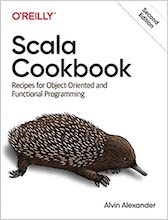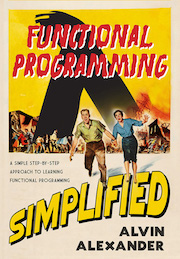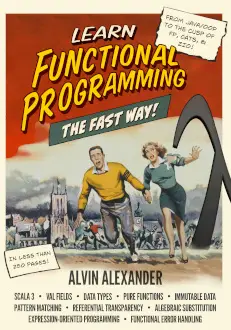Table of Contents
- One note before we start
- All Day Tip: Be mindful all day
- All Day Tip: Use a mantra during the day
- All Day Tip: Use Shinzen Young’s “noting” technique
- Reading meditation and mindfulness books before starting
- Reading and/or speaking statements of gratitude
- Do a few yoga poses for a few minutes
- Chanting or singing
- Make a game of it
- Count out loud
- Meditate, get up, and meditate again
- Imagine that you are sitting in a group
- Find your favorite helpful phrases to start with
- Focus on breathing through each nostril, one at a time
- Summary
When I first started meditating in the 1990s, I often had a hard time getting into the proper meditative state when I sat down on the meditation cushion. My “monkey mind” would be jumping all over the place, and it would take me a long time to get it to settle down. Many times I couldn’t even get it to settle down before my 30-minute timer went off.
Because of that, and because I really wanted to become better at meditating, I began experimenting with different ways to get into the meditative state faster.
As a result, this page is a summary of the best ways I know to help you get into a good meditation state when you take time to sit on the meditation cushion (or wherever else you sit). If you’re interested in getting into a deep state fast, these are the “best practices” I know, especially when you’re short on time.
One note before we start
I start off with several tips that I have labeled “All Day.” The intent of those tips is that you can use them all day to keep your mind in a great state all day. If you follow these tips, you’ll be in a great state even before you start with your formal meditation session.
After those initial tips, I get into other techniques that you can use just as you sit down on your cushion (or however else you meditate).
All Day Tip: Be mindful all day
If you become serious about meditation and begin reading books about it or studying with a qualified teacher, you’ll learn that one of the long-term goals is for you to meditate 24 hours a day, 7 days a week. That is, you’ll become so good at meditating that you’ll do it all day, every day.
To this end, Shinzen Young has a quote where he says something to the effect that when you start meditating, “meditation is something that happens during your day,” but once you get good at it, “your day will become something that happens within your meditation.” I can confirm that this is 100% correct.
Once you get to this point, it’s a great feeling!
One great way to learn how to meditate 24x7 is to use a mantra ...
All Day Tip: Use a mantra during the day
A mantra is a word or short phrase that you repeat to yourself all the time. For instance, Ram Dass’s teacher/guru could often be seen mouthing the word “Ram” over and over again during the day. He might be listening to others, but you could see his lips moving as he quietly said “Ram ... Ram ... Ram” all day long.
I’ve found that the best mantra is something that “feels” good or right to you. They can also depend on whether you are a religious person (and what your religion is), or if you are “spiritual but not religious.” (For instance, if you are a Christian, you might repeat, “Christ, son of God, have mercy on me, a sinner.”)
Some common mantras that I know are:
- “Om”
- “What am I?”
- “Here now,” or “Be here now” (from Ram Dass)
- I prefer “Only here, only now”
- “I am loving awareness” (also from Ram Dass)
- “Breathe,” or “Just breathe”
- “I am present”
- “I am enough”
- As I describe later in this article, use a technique known as “noting.” With this, you “note” everything you are doing throughout the day: “Walking ... walking ... stopping ... washing the dishes,” etc.
- Saying the name of God over and over again. For instance, Ram is a God in the Hindu religion.
The important thing about this technique is that it helps develop your “concentration muscle” all day, every day, so that when you start to sit on the meditation cushion, you’re already in a meditative state. So if you used to start at Level 0 and you were trying to get to Level 100 in meditation, maybe now you’re starting at Level 50, and you start off much closer to your goal.
Ram Dass also talked about using a mala while using your mantra. If you’re at work you might not want to sit in a meeting counting the beads on a string, but if you’re by yourself, this is something you can easily do.
Twenty-five years ago I wouldn’t be caught dead using a mantra, but today I can tell you it has been one of the Top-5 Most Important Ways I improved my meditation practice.
How to do this
The way this works is that while you’re doing something — let’s say you’re doing the dishes or watching a show — most of your attention is actually on your mantra. So you’re washing dishes and you keep repeating in your mind, “Om ... Om ... Om”, etc., whatever your mantra is. In fact, a way to think about this is that 80% of your concentration/awareness should be focused on your mantra, and 20% on what you’re doing.
The exception to that 80/20 rule is when you use a noting practice. In that case, what you’re saying and what you’re doing should always be exactly the same, so you can think that 100% of your mind is on what you’re doing: “Washing this spoon ... washing this fork ... washing this plate,” etc. (Or if you don’t like being that detailed you can just say, “Washing ... washing ... washing.”)
On my best days I know that I repeat my mantra about every five seconds for many hours, so if I do that every five seconds for eight hours ... I repeat that mantra 5,760 times in that eight-hour span. And if you are awake for 16 hours during a day, that’s 11,520 times a day. As you can imagine, this rapidly builds your concentration muscle!
As a warning about the 80/20 rule, if you are in a relationship, this approach can of course have an effect on that relationship. In my experience you have to decide what’s more important to you.
All Day Tip: Use Shinzen Young’s “noting” technique
By far, my favorite meditation technique for beginners is one that I learned from Shinzen Young’s teaching:
- Start meditating, alertly waiting for a thought to arise in your brain.
- Listen intently, as if you’re lost in a forest, and like a deer or rabbit, you acutely hear every strange sound, except you’re listening for thoughts in your brain.
- If no thoughts come up, about every 3-5 seconds say the word “rest” out loud.
- When a thought comes up, speak the word “hear”.
If a thought persists while you’re doing this, say the word “hear” every 3-5 seconds. This keeps you from getting attached to the thought. If the thought keeps running on for some time, don’t get attached to it, just keep saying “hear” out loud.
That’s the entire instruction. It’s simple, but extremely effective.
Reading meditation and mindfulness books before starting
Anything else you can do to quickly calm down is helpful. One technique is to grab a meditation or mindfulness book off your bookshelf and read a page or two, and then start your meditation session.
Reading and/or speaking statements of gratitude
Another thing you can do is say statements of gratitude, taking a few moments to state what you are grateful for. I remember reading a study somewhere that said that this is one of the best and fastest ways to get into a meditative state.
Do a few yoga poses for a few minutes
Just like the previous two techniques, another good thing to do is to roll out your yoga mat and do a few yoga poses for five minutes or so. As you do those poses, say statements like:
- Put it all down
- Let it all go
- Shanti, Shanti, Shanti (peace, peace, peace)
As usual with yoga, focus on your breath and your awareness while doing your poses.
Chanting or singing
If you enjoy singing, a similar approach is to sing whatever you want that helps you relax. It will probably help if it’s a relaxing spiritual song, but it can be anything that quickly changes your state of mind from (a) doing what you have to do during the day, to (b) a relaxed and mentally quiet state.
Make a game of it
Daniel Ingram suggests that when you meditate, you can make a game of it. For example, in one meditation technique he writes about, you should feel as many sensations in your body as you can, as fast as you can. The attitude is that you are “out to bust some vibrations.”
So basically you sit down, and as you feel sensations on your skin, or anywhere else in your body, or you hear something, or even if you note a thought in your mind, you count those as fast as you can.
- My leg itches. (“One!”)
- I hear a sound. (“Two!”)
You can think those words, but when you’re first sitting down on the meditation cushion, it may help to say them out loud.
Count out loud
If you do a meditation practice where you count your breaths, I found that it helps to initially count them out loud. So instead of thinking “one” in my mind, I say “one” out loud. I do this as long as I need to to calm down.
Meditate, get up, and meditate again
Another favorite technique is that I set a timer for 5-10 minutes, and try to meditate. Then, when the timer goes off, I get up, stretch for a moment or two, and then sit right back down again.
In my example of trying to get to Level 100 while meditating, I find that this helps me get from 0 to something like 20 or 30 during the first 5-10 minutes, and then when I sit down the second time I pick it up from there.
Imagine that you are sitting in a group
Meditating by yourself can be hard, so if you can, sit in a group with other meditators.
If you can’t do that, try to imagine that you’re sitting down to meditate with your favorite people, or the people who inspire you. Sometimes I’ll imagine that I’m sitting with Christ, Ram Dass, his guru (Maharaj-ji), Buddha, the Dalai Lama, and more. Then if I start slipping in my practice, I think, “Hey, don’t let these other people down.” :)
Find your favorite helpful phrases to start with
When I sit down I sometimes repeat words like this:
The day is done. Put it all down, let it all go. Whatever you’re thinking about doesn’t matter anymore, you can deal with it tomorrow. So for just the next 30 minutes (or eight hours), just forget all that crap and focus on right here and right now.
Words like that are a form of affirmation, and anything like that can be helpful.
Sometimes I also think of the Star Trek tv series, and how they would say, “Redirect all energy to the shields,” and I think something like that: “Redirect all awareness to the breath!”
A similar phrase I read somewhere is:
Now I am placing my mind upon the breath.
This is a way of telling your brain, “Hey, this is my time, and right here, right now, I only want to focus on the breath.”
You can also add a time limit to that, so you might say, “For just the next 30 minutes I am placing my mind upon the breath.” After that you can do whatever you want, but for the next 30 minutes this is the only thing I want to do.
Before moving on, here’s one more phrase I like:
In all the history of the universe,
And all the future of the universe,
The only thing that matters,
The only thing that’s real,
Is right here and right now.
Focus on breathing through each nostril, one at a time
If you practice yoga, you may know about breathing during your yoga poses (asanas). You may also know that when you get deeper into your practice, breathing becomes more and more important.
There’s one breathing exercise you do where you hold your finger over your right nostril, and then breathe through your left nostril, and then after doing that for a bit, you reverse the process.
I have gotten to a point where I can do that without having to place my finger on my nose, so I often start this way. I sit down and immediately start breathing in and out through the left nostril for a few breaths, then do the same thing through the right side. I may also breathe in through the left and then out the right. Anything like that will work.
The key of this technique is that it rapidly moves your awareness from “out there” — out in the outside world, and moves it “in here,” where it feels like your consciousness/awareness is basically inside your nose. This is one of the fastest techniques I know to almost instantly change your frame of mind, or more accurately, change where your awareness is.
Summary
In summary, if you are looking for techniques to help you relax and get into a meditative state as fast as possible when you sit down to meditate, I hope these techniques are helpful. I can write much more about each technique, but I wanted to keep this article as short as possible to give you as many techniques as possible.
Namaste,
Alvin



